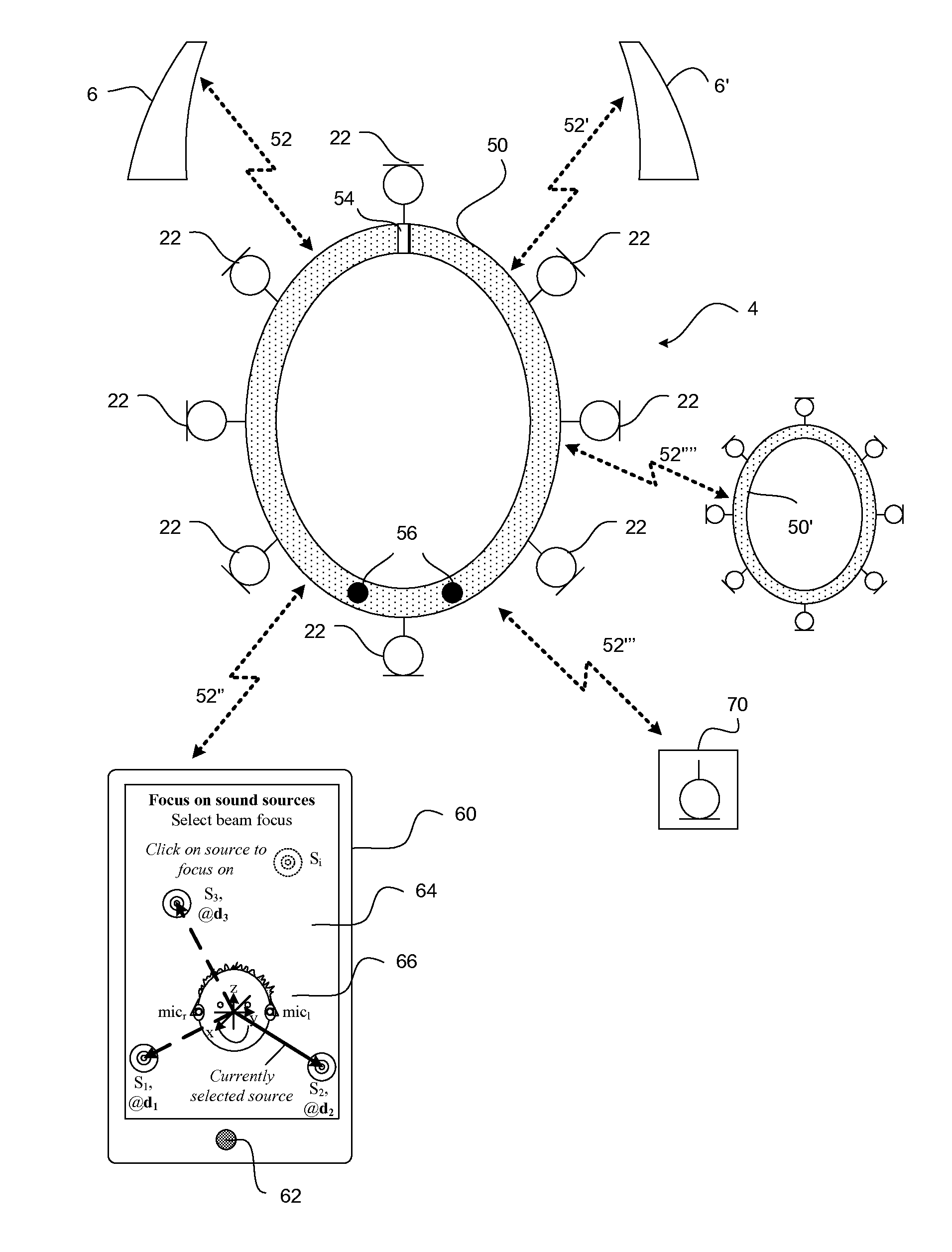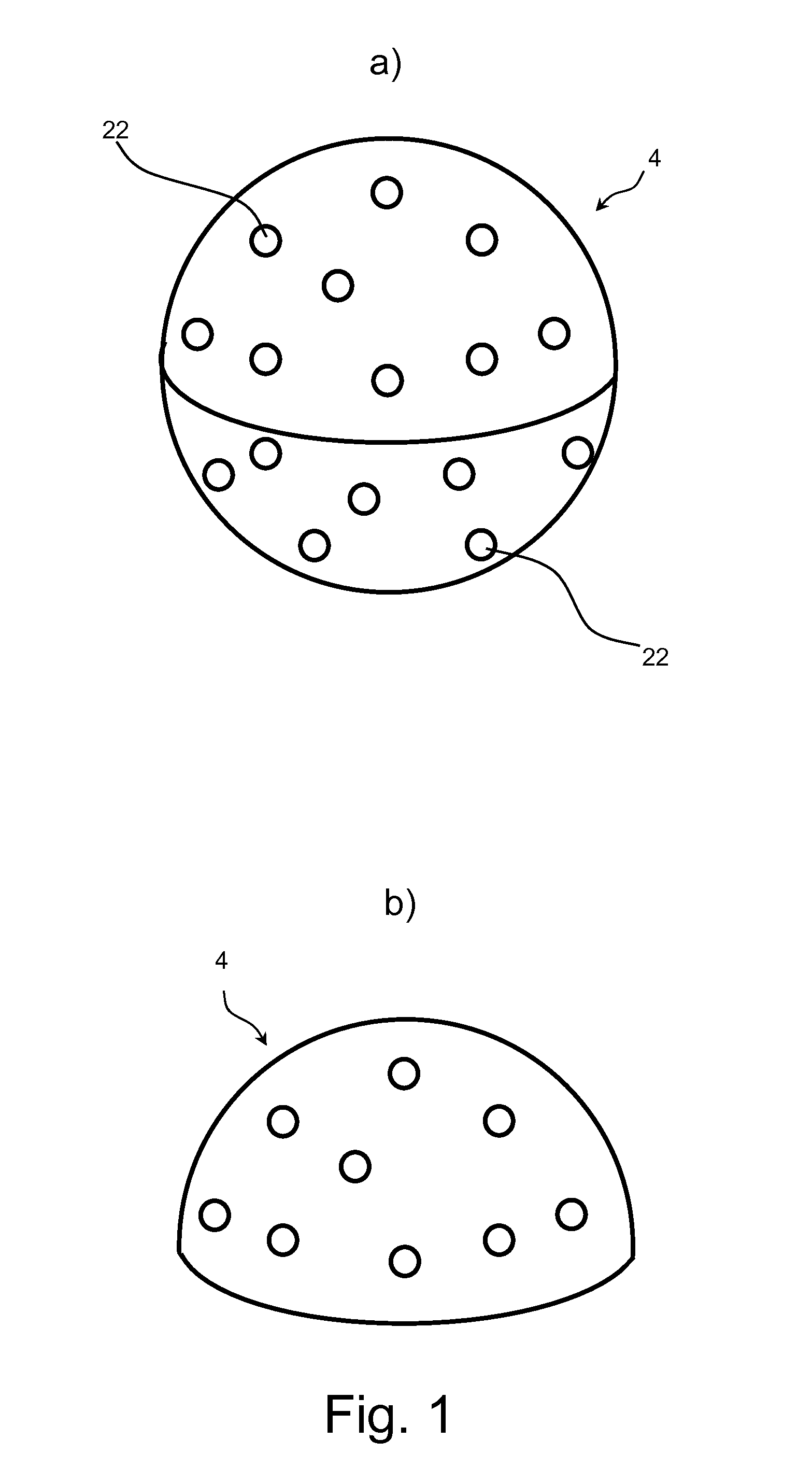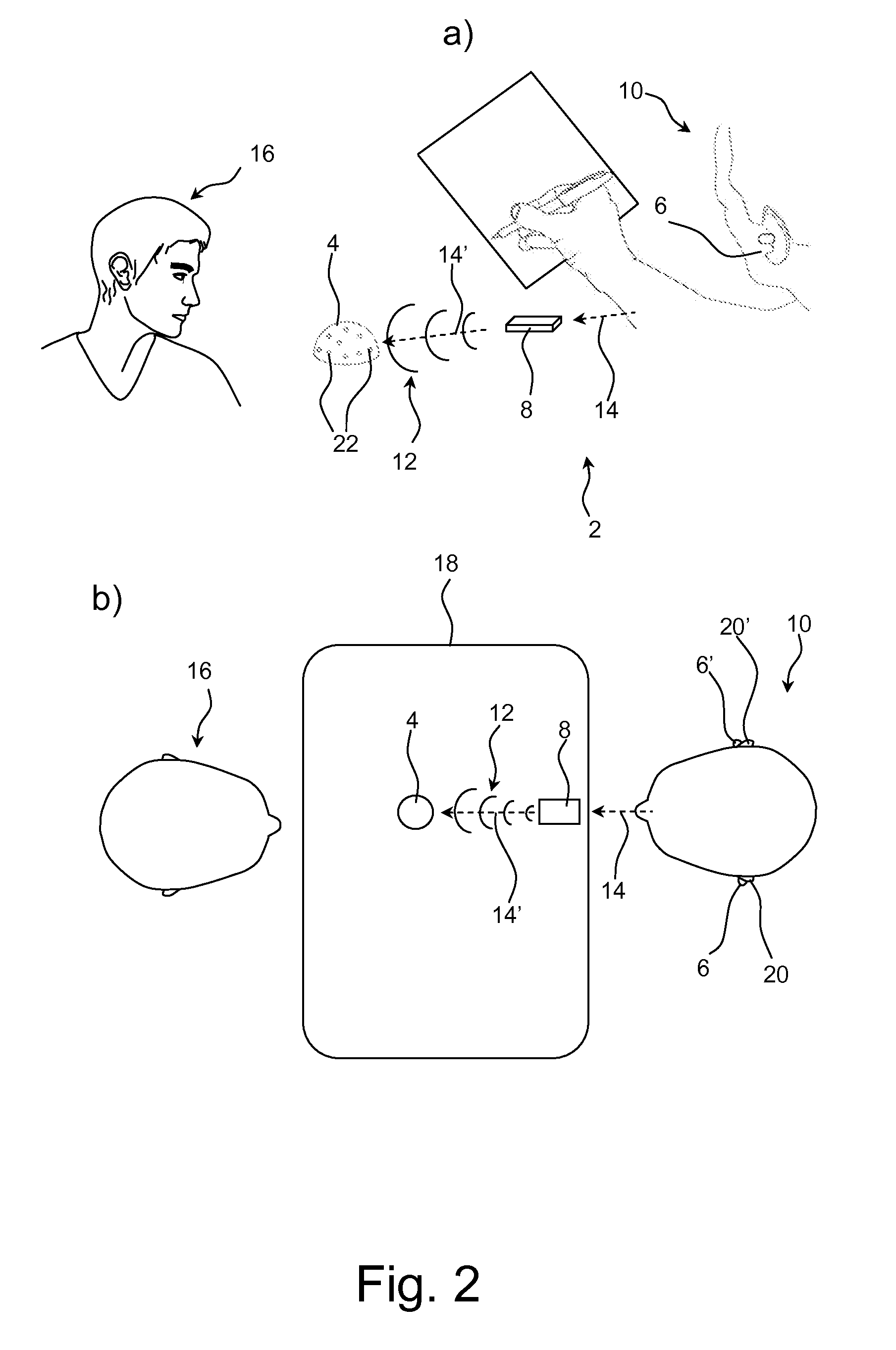External microphone array and hearing aid using it
a technology of external microphones and arrays, which is applied in the direction of microphones, electrical transducers, loudspeakers, etc., can solve the problems of difficult control of external microphone arrays, difficult for users to determine the direction of sound origin, and few people want to draw attention to hearing loss, etc., to achieve high directional beamforming response, facilitate speech, and improve signal-to-noise ratio
- Summary
- Abstract
- Description
- Claims
- Application Information
AI Technical Summary
Benefits of technology
Problems solved by technology
Method used
Image
Examples
example
Cosmetically Attractive Listening Neckband with Microphone Array for Improved Speech-to Noise Ratio and Built-in Connectivity
[0154]The listening neckband′ (as schematically illustrated in FIG. 7) is a cosmetically attractive high performance hearing solution. The neckband 50 works together with wireless earpieces, e.g. hearing aids 6, 6′ (possibly downscaled versions comprising output transducers (e.g. loudspeakers) and limited audio processing). Main features of the neckband hearing solution (one or more of the following features may be included / combined according to the practical application):[0155]Very attractive physical appearance neckband 50.[0156]The Neckband comprises an array 4 of microphones 22, in FIG. 7 in 360 degrees around the head of the user allowing superior directionality (conveniently providing microphone pickup locations to the side of and behind the user, thereby truly reflecting a sound field surrounding the user). In an embodiment, the array comprises 4 or mor...
PUM
 Login to View More
Login to View More Abstract
Description
Claims
Application Information
 Login to View More
Login to View More - R&D
- Intellectual Property
- Life Sciences
- Materials
- Tech Scout
- Unparalleled Data Quality
- Higher Quality Content
- 60% Fewer Hallucinations
Browse by: Latest US Patents, China's latest patents, Technical Efficacy Thesaurus, Application Domain, Technology Topic, Popular Technical Reports.
© 2025 PatSnap. All rights reserved.Legal|Privacy policy|Modern Slavery Act Transparency Statement|Sitemap|About US| Contact US: help@patsnap.com



